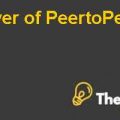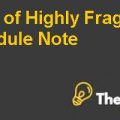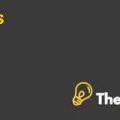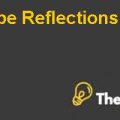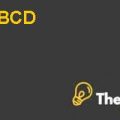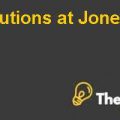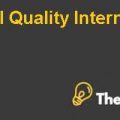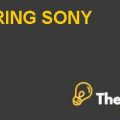British Airways Case Study Solution
Analysis of Organizational Behavior (OB) issues in British Airways
The following analysis highlights the issues that led to Bob Ayling’s dismissal from British Airways. Each of the identified issues had a strong impact on the eventual decline in the organisation’s levels of customer satisfaction and its financial gains.
Conflicting Approaches to Human Resource Management
Two contrasting approaches to Human Resource Management can be seen in the case and each has led to its own set of implications for the organisation. These implications have brought about certain challenges in the organisation and will be discussed in detail .
The HRM approach adopted by King and Marshal as the heads of the organisation was more of a soft approach where the employees were considered the source of the firm’s competitive advantage(McGregor, 1957). Investment in employees in the form of intensive management trainings like ‘Putting People First’ and ‘Managing People First’ were not just designed to bring about improvements in customer services but were seen as an investment in human resources. This approach to HRM shows a focus towards long term workforce planning designed to empower and encourage employees in order to achieve excellence in service.
Marshal’s soft HRM approach of developing and empowering the airline’s front line operators not only developed a privileged reputation in customer services but also allowed British Airways to set new standards amongst all service orientated companies. This approach has a domino effect on the financial aspects of an organsiation as evident by the high profits that were achieved during Marshal’s period as the head of British Airways.
In contrast to this, Ayling’s approach was more of Hard HRM where employees are regarded as just resources of a business and corporate planning focuses on keeping costs low even if it means redundancies for these resources. So short term changes in the number of employees in the form of redundancies or planned recruitments were seen in Ayling’s strategy .
The evidence of this approach is further seen in Ayling startegy in terms of cutting costs through pay cuts and making employees accept deals for lower compesation for attaining cost savings.
The hard HRM approach gives lower emphasis to employee development which is evident in several areas in the case. Ayling’s lack of emphasis on training programs, contracting out the employee suggestion scheme ‘Brainwaves’ and recruiting new employees rather than focusing on the development of new ones are explicit examples of this approach which eventually resulted in low motivation, decline in customer services and eventually led to financial implications.
Critically examining Alying’s apprach suggests that he was attempting to gain the advantage of both the soft and hard appraches by showing a laid back attitude while asking for drastic changes in terms of cost cutting through redundancies and selling different functional departments.
Application of Management Theories for understanding
Theory X & Y :In Management theories, these two contrasting views of HRM can be easily identified as McGregger’s Theory X and Theory Y(McGregor, 1957). Ayling’s strategy can be defined as an example of Theory X where he felt it was the management’s responsibility to organize factors of production such as money, people material and equipment . Further more this theory believes in controlling the actions of people and directing their efforts while modifying their behaviour so that it fits the needs of the organisation. Activites like punishing, controlling, rewarding and persuading the employees are common in this approach (McGregor, 1957). The use of extreme tactics like intimidating and threatening the staff of BA during the threat of a potential strike is an example of this behavior. Additionally, forcing the union representatives to accept the deal of lower compensations for members is another example that justifies this point.
On the other hand, Marshal’s earlier approach to HRM can be categorized as Theory Y which specifically believes that people are not resistant to their organsiation’s needs and so they already have the motivation and readiness to direct their behavior towards the achievement of organsiational goals(McGregor, 1957). Theory Y believes that people have the potential for development already within them and so this apprach does not revert to cost cutting through redundancies but focuses on employee empowerment instead.
British Airways Harvard Case Solution & Analysis
Maslow’s Needs’ Hierarchy :One major implication of Ayling’s adopt on of theory X and his focus on hard HRM has been the low morale prevalent within the organsiation translating into lower customer satisfcation and decline in financial gains. This effect can be understood through Maslow’s Motivational theory of ‘Needs Hierarchy (Stimpson, 2010)’ as shown in appendix 1.As per the theory, motivation is linked to the satisfaction of needs in a specified hierarchy. Physiological needs or the basic needs are at the base of the pyramid and in order to increase levels of motivation, the needs must be satisfied in the order by going up the pyramid. In appendix 1, it can been that the second level of needs specified by Maslow are ‘Safety Needs’ or in a broader sense, the security of body, employment or health. Aaling attempt at cutting down costs for the welfare of British Airways directly attacked the ‘Safety Needs’ of the employees. When they did not feel secure in their job, knowing that any attempt to cut down costs could affect their employee there was little motivation left for delivering high performance. . Facts like absenteeism, the absence of customer care during emergencies and a low desire to address customer concerns were some of the issues the organisation faced during Ayling’s period when BA lost various issues of customer dissatisfaction...............
This is just a sample partial case solution. Please place the order on the website to order your own originally done case solution

